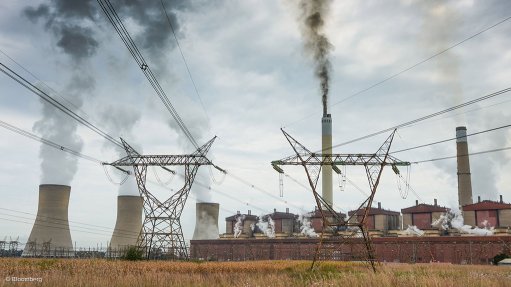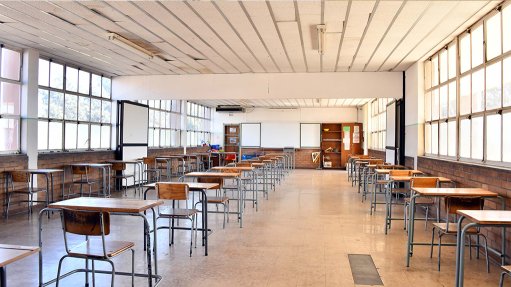Injustices of the tender system
Astronaut John Glenn, about to be rocketed into space in 1962, was asked how he was feeling. His supposed reply was: “I felt exactly how you would feel if you were getting ready to launch and knew you were sitting on top of two-million parts — all built by the lowest bidder on a government contract.”
The tender system is widely used in this country. A prospective buyer asks three suppliers to give a price for a service or a component and then the tender is, theoretically, awarded to the supplier who can supply the requirement to specification at the best price. In South Africa, the tender is evaluated on a points system; in theory, a maximum of 80 points are awarded for price and 20 for black economic empowerment (BEE). If the supplier is wholly owned and managed by black people and has skills development, enterprise development, supplier development, preferential procurement and socioeconomic development programmes, then that supplier has maximum ‘procurement recognition’ and gets at least 20 points. If not black owned at all, the supplier gets none. Thus if, for example, a non-black-owned company bids against a black company, its price must be very low to get the contract. At the same time, the black company can still load the price and get the contract.
This system has several flaws. A black person can set up a front company and get a contract on a BEE qualification basis and then pass the work on to a non-BEE company, which then does the work, with the BEE company making a profit on the whole deal. This practice hardly achieves the objectives of BEE, which is to pass skills on to black companies. Customers try to get around this by specifying that the contract cannot be subcontracted but there are many ways around this.
Another ploy is that of collusion: a bunch of firms get together and decide who will get a contract (they take turns). Then one submits a competitive tender and the others higher prices. The lowest gets the contract and next time it’s the turn of one of the others. This occurred widely at the time of construction of the 2010 Soccer World Cup stadiums. There were reports that Grinaker-LTA, WBHO, Murray & Roberts, Group Five, Concor, Basil Read and Stefanutti all colluded. This sounds very bad, but one must recall that the idiot clients who let these contracts had no clue about construction deadlines and set such unrealistic programmes for tender and construction that collusion was inevitable.
The big disadvantage of the tender system, BEE and collusion notwithstanding, is what I call the ‘pole-vaulter principle’. It is simply this: some people can pole-vault higher than others. If they don’t get over the bar, then they are out. Similarly, some firms are better than others in what they do. There is always somebody who is cheaper but not as good. Sometimes when my practice offers a price for some work, we end up having the ‘motor-car equivalent’ discussion with a client. They look at our price and say: “Uh . . . you know, I think we want a Volkswagen but you’re offering us a Rolls-Royce.” I get what they mean but I can’t follow their logic. Engineering design is either okay or it’s not okay. Nothing at all to do with motor cars.
I very much doubt the South African tender system will change. There are too many people making a fortune out of doing very little other than playing the system. Further, provided you have a few corrupt people in the system, there is a lot of money to be made with little fear of discovery. The tender system is not made for people who do not have moral scruples.
If it was up to me, I would devise a system whereby all requests for proposals are based on a ‘silent auction’ system, where offers are received and publicised and others are asked to beat the offers. It might work. Couldn’t be worse than the present system.
Article Enquiry
Email Article
Save Article
Feedback
To advertise email advertising@creamermedia.co.za or click here
Comments
Press Office
Announcements
What's On
Subscribe to improve your user experience...
Option 1 (equivalent of R125 a month):
Receive a weekly copy of Creamer Media's Engineering News & Mining Weekly magazine
(print copy for those in South Africa and e-magazine for those outside of South Africa)
Receive daily email newsletters
Access to full search results
Access archive of magazine back copies
Access to Projects in Progress
Access to ONE Research Report of your choice in PDF format
Option 2 (equivalent of R375 a month):
All benefits from Option 1
PLUS
Access to Creamer Media's Research Channel Africa for ALL Research Reports, in PDF format, on various industrial and mining sectors
including Electricity; Water; Energy Transition; Hydrogen; Roads, Rail and Ports; Coal; Gold; Platinum; Battery Metals; etc.
Already a subscriber?
Forgotten your password?
Receive weekly copy of Creamer Media's Engineering News & Mining Weekly magazine (print copy for those in South Africa and e-magazine for those outside of South Africa)
➕
Recieve daily email newsletters
➕
Access to full search results
➕
Access archive of magazine back copies
➕
Access to Projects in Progress
➕
Access to ONE Research Report of your choice in PDF format
RESEARCH CHANNEL AFRICA
R4500 (equivalent of R375 a month)
SUBSCRIBEAll benefits from Option 1
➕
Access to Creamer Media's Research Channel Africa for ALL Research Reports on various industrial and mining sectors, in PDF format, including on:
Electricity
➕
Water
➕
Energy Transition
➕
Hydrogen
➕
Roads, Rail and Ports
➕
Coal
➕
Gold
➕
Platinum
➕
Battery Metals
➕
etc.
Receive all benefits from Option 1 or Option 2 delivered to numerous people at your company
➕
Multiple User names and Passwords for simultaneous log-ins
➕
Intranet integration access to all in your organisation

















